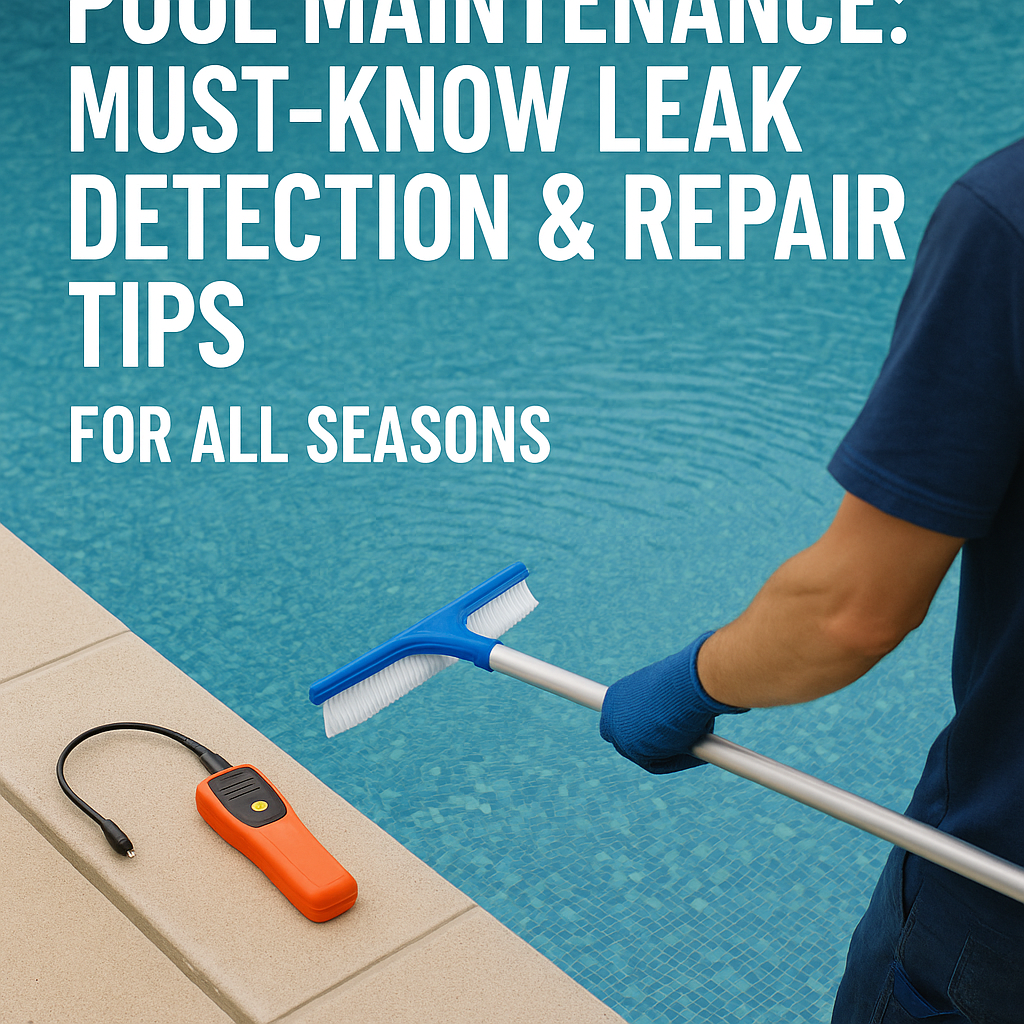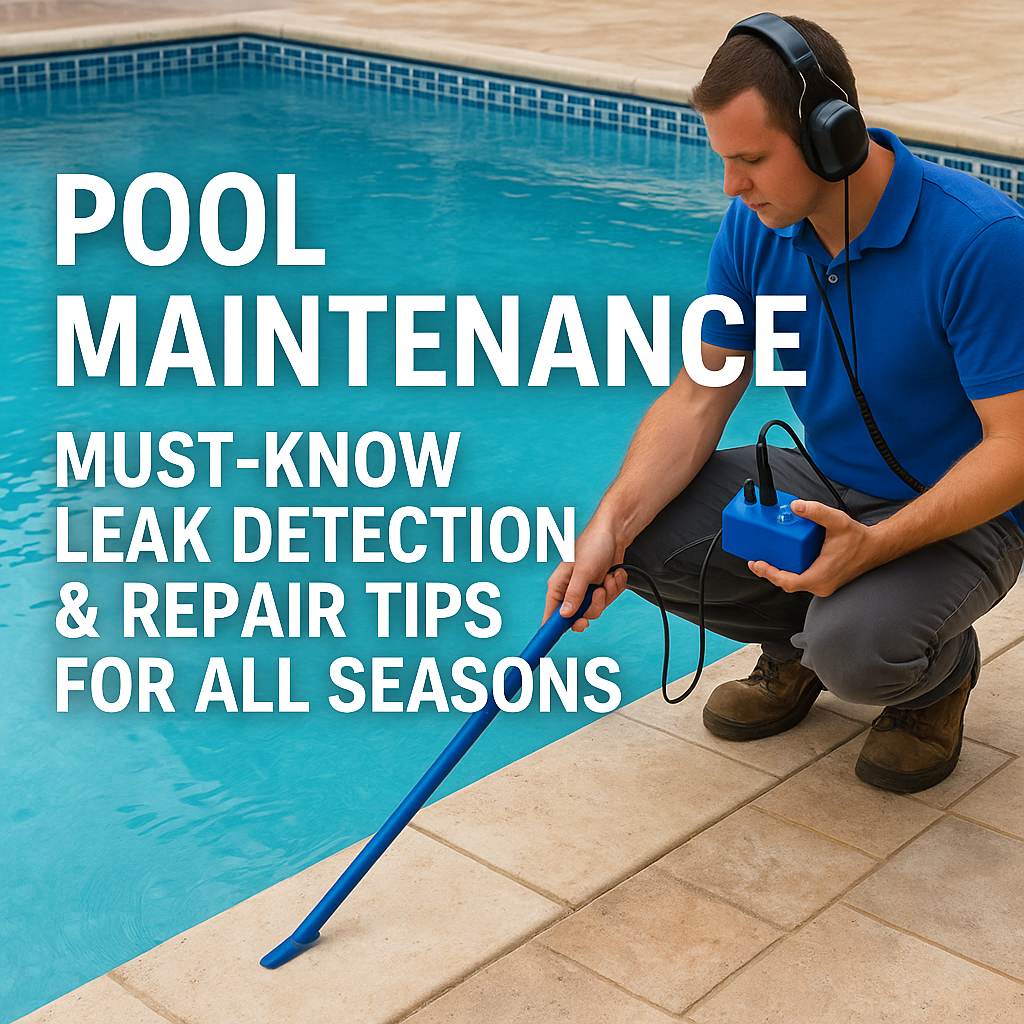Pool maintenance lies at the heart of a swimmers’ refreshing experience. A well-maintained pool not only ensures a smooth swim but also extends the life of your pool. Among all the apparent tasks of pool maintenance, an issue owners often encounter is that of pool leaks. While they may appear small, if left unattended, they can lead to significant damage and sky-high water bills. This article will help you navigate through pool leak detection, pool leak repair, and carry you through all-season pool maintenance.
Understanding Pool Leak Detection

Identifying a leak can be challenging as water can escape through a microscopic crack or hole. Here are a few methods and signs that can help with pool leak detection.
Check for Signs of Leakage: The first telltale signs of a leak include a significant drop in water level. While minor evaporation is natural, excessive loss indicates a problem. Additionally, water-soaked areas surrounding the pool, a sudden rise in water bills or the frequent need to add water are other red flags to watch out for.
Bucket Test: This is the simplest and most cost-effective method to detect a pool leak. Fill a bucket till three-quarters, mark the water level, and place it in the pool. Mark the pool water level on the bucket. After 24-48 hours, if the pool water level has decreased more than the water inside your bucket, there’s a high chance your pool has a leak.
Dye Test: If you suspect a leak but cannot pinpoint the location, a dye test can come handy. Turn off the pool pump and release a few drops of dye where you suspect a leak. If the dye gets sucked into the crack or opening instead of dispersing in the water, you’ve found your leak.
Essential Guide to Pool Leak Repair
Once you’ve detected a leak, it’s time to move towards pool leak repair. Small leaks can often be fixed using DIY pool leak repair kits available in the market, but larger leaks might need a professional touch.
Patch Kits: For smaller, surface-level cracks or leaks, patch kits can provide temporary or even permanent solutions. These kits usually include a sealing compound that, when applied to the leaking area, hardens to provide a watertight seal.
Professional Support: Larger leaks, especially those that are deep or beneath the pool, require professional assistance. They have the tools and technical understanding to repair the leaks while ensuring the structural integrity of your pool. So, it’s vital to contact a pool maintenance professional as soon as possible if you suspect a significant leak.
All Season Pool Maintenance
Seasonal changes bring different challenges for pool maintenance. Let’s understand what these are and how you can address them.
Spring: Opening up your pool after winter requires a thorough check-up for any potential leaks caused by the cold. Cleaning the pool, balancing the water chemistry, and checking all equipment should be on the spring maintenance checklist.
Summer: This is when your pool gets the most action. Regular skimming, vacuuming, and balancing of chemicals are essential. This is also the time when leaks can be most noticeable due to the heavy use.
Autumn: Falling leaves and debris can cause clogs and potential damage in your pool. Ensure to clean and cover your pool correctly and continue to monitor for any signs of leaks.
Winter: This time calls for proper winterizing of your pool to prevent freeze damage. Drain the water to the appropriate level, clean, cover, and remember to check the pool equipment for potential leaks before you close the pool for winter.
In conclusion, a swimming pool leak not only results in water loss but can also inflict serious damage to your pool if ignored. By employing effective pool leak detection methods, conducting regular pool leak repair, and following an all-season pool maintenance protocol, you can safeguard your pool’s health and enjoy the refreshing fun it promises. Remember, in pool maintenance, prevention is always better than cure.


